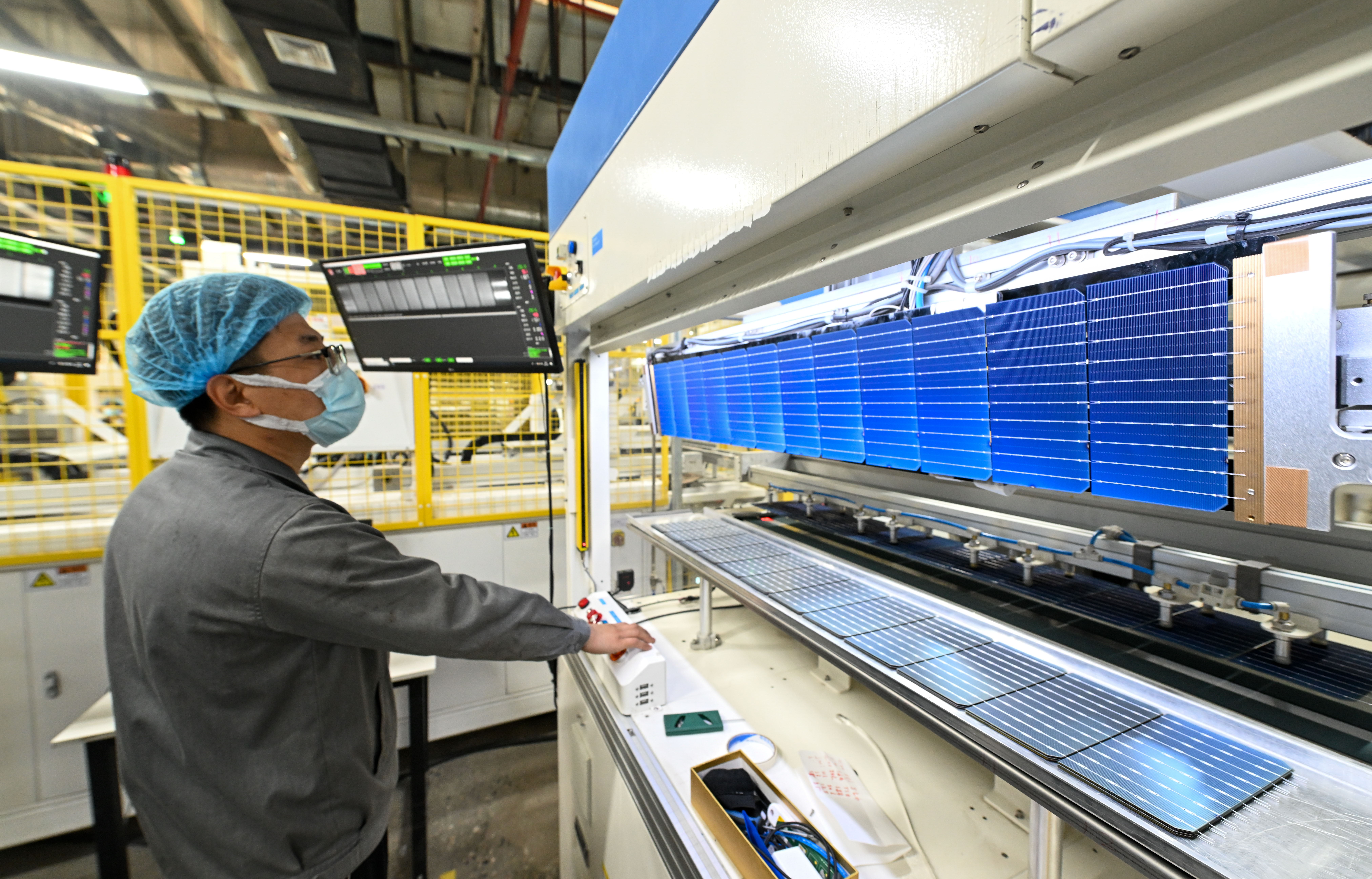'Altasia' Can't Replace Chinese Supply Chain
A worker operates the equipment to test photovoltaic modules in the production workshop of a new energy company, Tianjin, north China, March 7, 2023. (PHOTO: XINHUA)
By TANG Zhexiao
What are the alternatives to "Made in China"? Amid the current growing geopolitical rift globally, an article published in The Economist recently coined a new term - Altasia, a short word for the alternative Asian supply chain.
Altasia stretches from Japan's Hokkaido to northwest India's Gujarat, passing through South Korea, China's Taiwan, the Philippines, Indonesia, Singapore, Malaysia, Thailand, Vietnam, Cambodia, and Bangladesh.
Data from the World Bank shows Altasia and China are evenly matched in exports, with Altasia's exports to the U.S. totaling 634 billion USD from October 2021 to September 2022, slightly higher than China's 614 billion USD.
The two are also close in skilled workers. Among the 25 to 54-year-old population, 145 million in China have received higher education, compared with 155 million in Altasia.
According to The Economist Intelligence Unit and Haver Analytics, manufacturing labor cost in certain areas in South and Southeast Asia such as India, Thailand and Vietnam is as low as three USD per hour, compared with 8.31 USD in China.
The appeal of moving factories to Vietnam was in large part driven by cheaper labor costs, said Bloomberg.
Meanwhile, China is ascending the value chain by implementing a policy of high-quality development.
According to China's Ministry of Industry and Information Technology, the manufacturing value-added output of the country had expanded from 16.98 trillion RMB (about 2.5 trillion USD) in 2012 to 31.4 trillion RMB in 2021, accounting for 30 percent of the global manufacturing output in 2021.
The complete replacement of China is still challenging, and The Economist admits that no country in the region can match the importance of China as an export center.
Altaisa doesn't work as a separate entity like China, because China has a complete industrial system and huge manufacturing capacity.
Indeed, the proposal of Altasia goes against Asian economic integration and globalization.
The attempt to lure manufacturing away from China and decouple economies from international systems has seriously affected the security and stability of the global supply chains and hindered the recovery of the global economy.
Deepen supply chain cooperation counts more than reshaping the global division of labor through political maneuvers.
As Bloomberg said, there won't be one new factory floor of the world to replace China, the others just need to get used to a new model of globalization.



